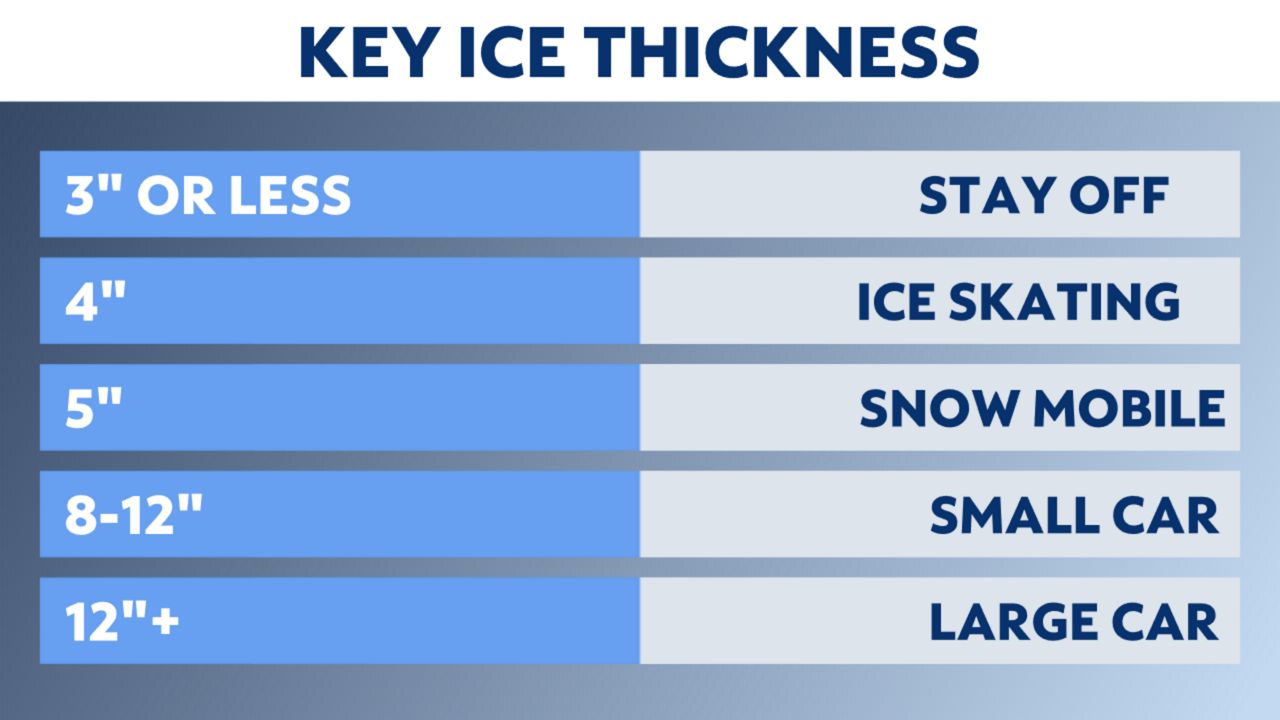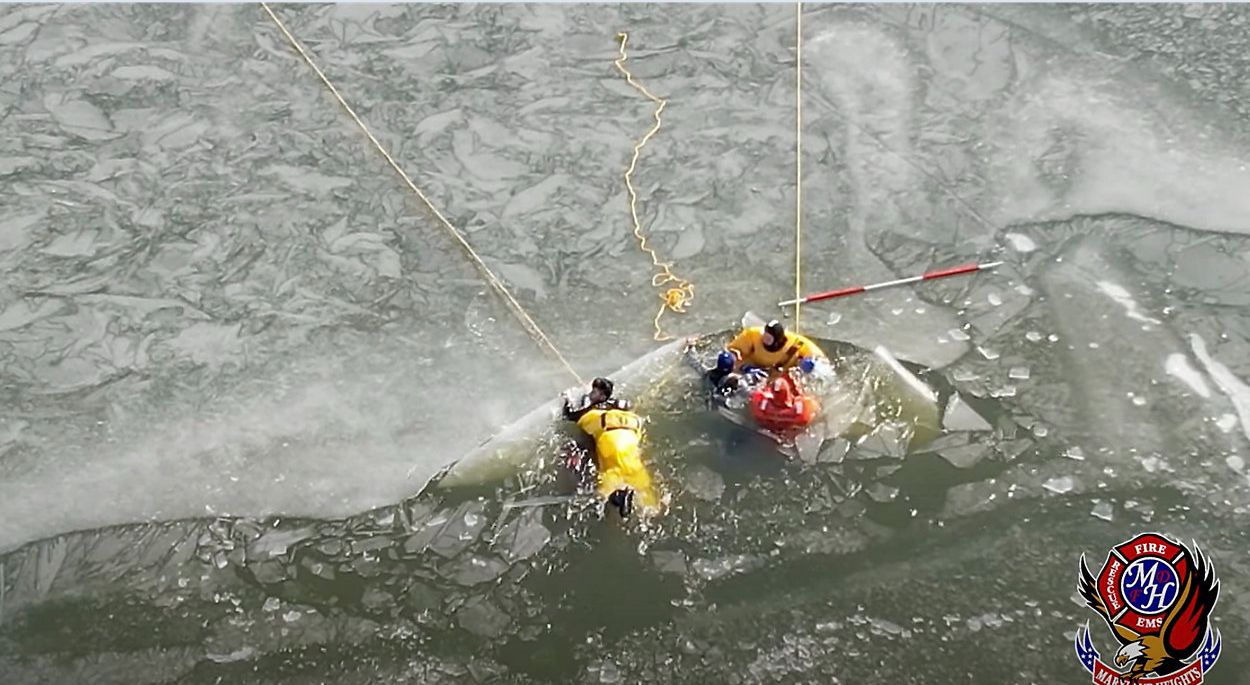MARYLAND HEIGHTS, Mo. – A dramatic rescue took place on Tuesday morning at Creve Coeur Lake in Maryland Heights.
The Maryland Heights Fire Protection District happened to be in the right place at the right time. They were packing up their equipment from ice training exercises when a deputy chief noticed two teenage boys about 350 feet from shore out on the ice.
The boys appeared to be attempting to run across the ice when the ice gave way and they fell into the water.
Maryland Heights Fire Protection District Chief Steve Olshwanger was thankful that his team was there. Chief Olshwanger said, “We went from training mode to a real rescue. We had the truck repositioned and three guys in ice suits with ropes in just a few moments, helping to limit exposure time for the boys.”
He estimates the teens were in the water for 4-6 minutes, but it was just enough time for signs of hypothermia. They sent the teenagers to local hospitals to be checked out and the teens were released a few hours later.
This incident occurred around 10:40 a.m. on Tuesday. Temperatures had warmed into the mid-40s by then, under sunny skies.
Olshwanger observed that the middle of the lake was no longer frozen and he could clearly see free flowing water. He mentioned that ice was still visible around the shore by the beach.
With water shallowest along a lake’s edge, the ice there may have appeared thick, giving the teens a false sense of thickness for the overall lake.

However, no ice is 100% safe, thick or not. A frozen pond or lake might look idyllic with its glimmering surface and beautiful deposits. Yet, the depth of that inviting frozen waterway is deceiving.
To measure ice thickness accurately, grab the tape measure and hook it to the underside of the ice.
The general rule is to avoid walking on ice that is less than 3 inches thick. Ice that is 4 inches thick is better for ice fishing and ice skating. A snow mobile can cross ice when it’s 5 inches thick and a compact car would need 8 to 12 inches of ice.
Not all ice is created equal. The thickest ice is the clear, blue ice. It forms when temperatures are at their lowest, meaning the water molecules freeze at the same time.
White ice is strong, yet only half as strong as clear ice. Gray ice is the least safe, showing that melting has occurred and water is moving below the ice.
Video taken from the drone filming the training exercise and Chief Olshwanger’s observations show the lake was covered in gray ice and had several cracks in it. This is likely why the ice gave way and the teens fell into the lake.
If you find yourself in a situation where the ice has given way and you are in the water, use these tips to give yourself the best chance. Also, knowing the signs of hypothermia in adults and children can save lives.
Chief Olshwanger returned to the lake on Wednesday and noticed more footprints out on the ice by the beach area.
While there are signs posted to stay out of the lake, Olshwanger wants to reiterate that no one should attempt to walk on the ice.
“You can’t judge how thick it is. We have plenty of recreational safe ice rinks around St. Louis to explore. I’m glad we happened to be at the lake that day, otherwise this could have had a completely different ending.”





